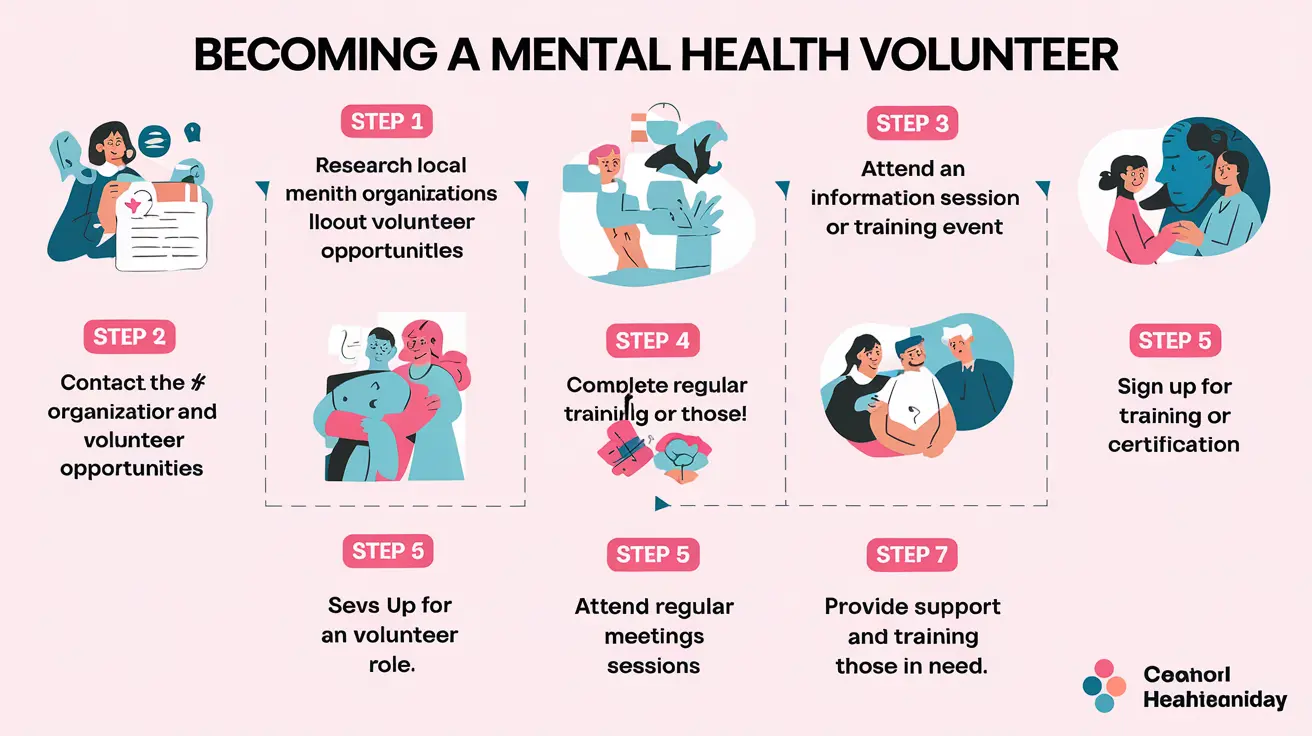Volunteering in mental health can be a deeply rewarding experience. It allows you to make a difference in the lives of individuals who need support while gaining valuable skills and insight. If you’re interested in becoming a mental health volunteer, follow these steps to get started.
Step 1: Understand the Role of a Mental Health Volunteer
Mental health volunteers provide emotional support, guidance, and resources to individuals struggling with mental health challenges. Your role may include:
- Listening and offering empathy.
- Assisting with mental health programs or activities.
- Spreading awareness about mental health.
- Supporting individuals in crisis or recovery.
Volunteers do not act as therapists or counselors but play a vital role in offering compassion and connection.
Key Qualities Needed:
- Patience and empathy.
- Good communication skills.
- Ability to maintain confidentiality.
- A non-judgmental attitude.
Step 2: Identify Your Motivation
Think about why you want to become a mental health volunteer. Understanding your motivation will help you stay committed and find opportunities that align with your goals.
Common reasons include:
- Wanting to help others.
- Personal experiences with mental health.
- Building skills for a future career in mental health.
- Raising awareness in your community.
When you know your purpose, you’ll feel more fulfilled in your role.
Step 3: Research Volunteer Opportunities
Look for organizations that align with your interests. Many organizations offer mental health volunteer roles, including:
- Crisis Hotlines: Support individuals in distress through phone or text services.
- Mental Health Nonprofits: Assist with advocacy campaigns or administrative tasks.
- Hospitals and Clinics: Help with patient activities or mental health events.
- Community Centers: Lead support groups or assist with workshops.
- Schools and Universities: Mentor students or participate in mental health awareness programs.
Where to Start Your Search:
- Check local nonprofit organizations.
- Explore online platforms like VolunteerMatch, Idealist, or GivePulse.
- Visit mental health organizations’ websites directly.
- Network with mental health professionals for recommendations.
Step 4: Meet Basic Requirements
Many volunteer roles have specific requirements. Ensure you meet these before applying. Common requirements include:
- Minimum Age: Some organizations require volunteers to be 18 or older.
- Background Check: To ensure the safety of participants.
- Training: Some roles may require completion of mental health training or certifications.
If you’re unsure, contact the organization to clarify their prerequisites.
Step 5: Take Relevant Training
Training equips you with the skills and knowledge needed to support individuals effectively. Many organizations provide training for new volunteers, covering:
- Active listening techniques.
- Crisis intervention strategies.
- Mental health basics.
- Cultural sensitivity.
- Self-care practices for volunteers.
You can also seek additional training independently. Programs like Mental Health First Aid or Applied Suicide Intervention Skills Training (ASIST) are highly recommended.
Step 6: Apply for Volunteer Roles
Once you find an opportunity that fits your goals, submit your application. The process often includes:
- Filling out an online or paper application.
- Attending an interview or orientation.
- Completing required paperwork (e.g., waivers, background check forms).
Use the interview to showcase your passion for mental health and highlight relevant skills or experiences. Be honest about your availability and commitment.
Step 7: Start Volunteering
After acceptance, dive into your role with enthusiasm. Follow the guidelines and expectations set by the organization. Focus on building connections and providing meaningful support.
Tips for Success:
- Be punctual and reliable.
- Listen actively without offering unsolicited advice.
- Respect boundaries and maintain confidentiality.
- Ask questions if you need clarification.
Step 8: Practice Self-Care
Supporting others in mental health can be emotionally challenging. Prioritize your own well-being to stay effective and avoid burnout.
Self-Care Tips:
- Set boundaries and manage your workload.
- Take breaks when needed.
- Seek support from supervisors or peers.
- Engage in relaxing activities outside of volunteering.
Remember, your well-being is crucial to providing quality support.
Step 9: Continue Learning
Mental health is a complex and evolving field. Stay informed about new research, resources, and techniques. Attend workshops, webinars, or conferences to deepen your understanding.
Suggested Learning Resources:
- Mental health blogs and podcasts.
- Books by mental health experts.
- Online courses on platforms like Coursera or Udemy.
- Local or national mental health events.
Continuous learning ensures you stay prepared for challenges and opportunities.
Step 10: Expand Your Impact
Once you gain experience, look for ways to increase your impact. You can:
- Advocate: Raise awareness about mental health in your community.
- Mentor: Guide new volunteers in their journey.
- Take on Leadership Roles: Help coordinate events or manage volunteer teams.
- Specialize: Focus on specific areas like youth mental health or crisis intervention.
Expanding your role allows you to contribute more meaningfully and grow personally.
Conclusion
Becoming a mental health volunteer is a fulfilling way to support others and promote mental health awareness. By following these steps, you can find the right opportunity, build essential skills, and make a lasting impact. Start your journey today and become a vital part of the mental health movement.

